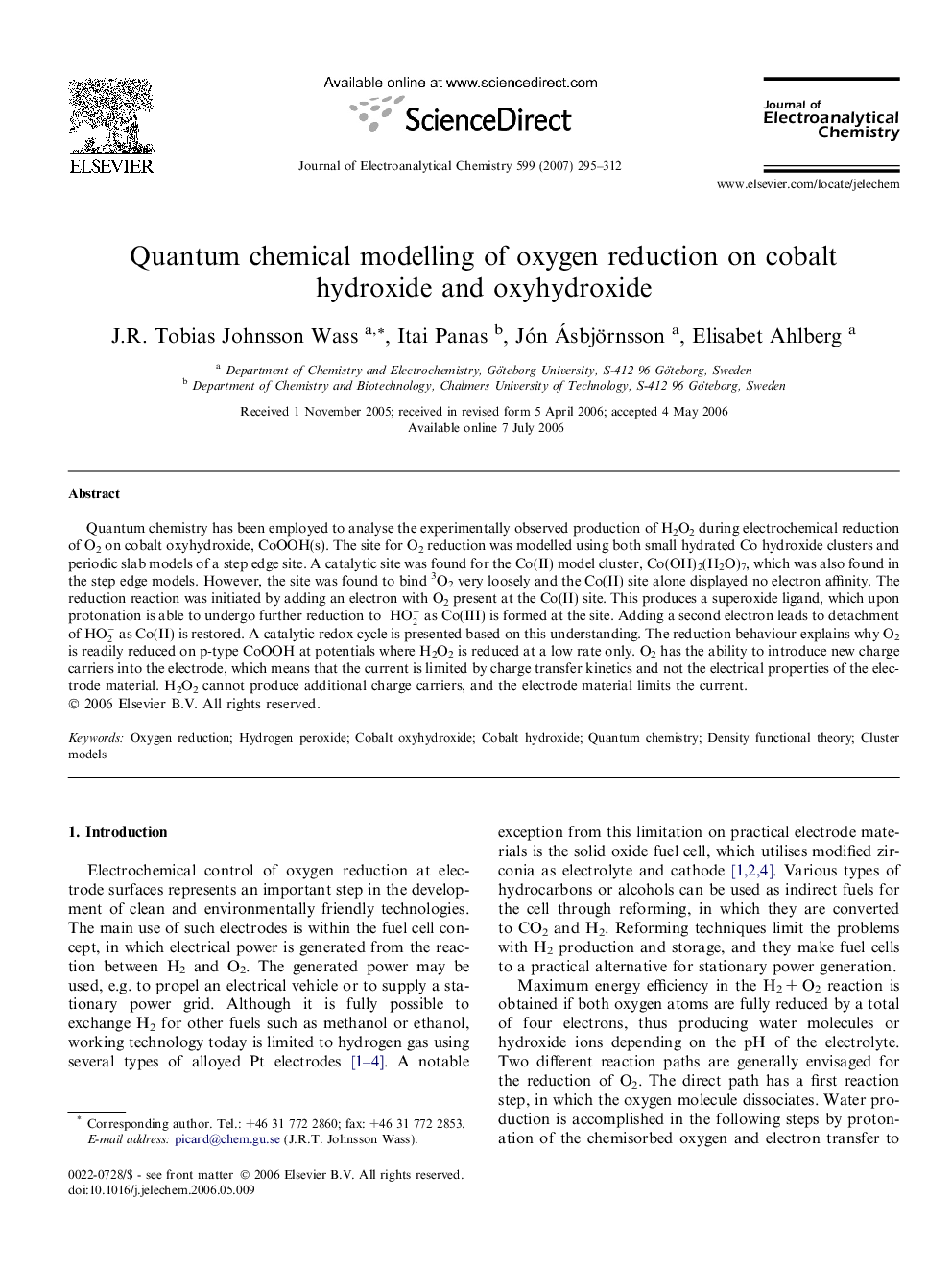| Article ID | Journal | Published Year | Pages | File Type |
|---|---|---|---|---|
| 221035 | Journal of Electroanalytical Chemistry | 2007 | 18 Pages |
Quantum chemistry has been employed to analyse the experimentally observed production of H2O2 during electrochemical reduction of O2 on cobalt oxyhydroxide, CoOOH(s). The site for O2 reduction was modelled using both small hydrated Co hydroxide clusters and periodic slab models of a step edge site. A catalytic site was found for the Co(II) model cluster, Co(OH)2(H2O)7, which was also found in the step edge models. However, the site was found to bind 3O2 very loosely and the Co(II) site alone displayed no electron affinity. The reduction reaction was initiated by adding an electron with O2 present at the Co(II) site. This produces a superoxide ligand, which upon protonation is able to undergo further reduction to HO2- as Co(III) is formed at the site. Adding a second electron leads to detachment of HO2- as Co(II) is restored. A catalytic redox cycle is presented based on this understanding. The reduction behaviour explains why O2 is readily reduced on p-type CoOOH at potentials where H2O2 is reduced at a low rate only. O2 has the ability to introduce new charge carriers into the electrode, which means that the current is limited by charge transfer kinetics and not the electrical properties of the electrode material. H2O2 cannot produce additional charge carriers, and the electrode material limits the current.
